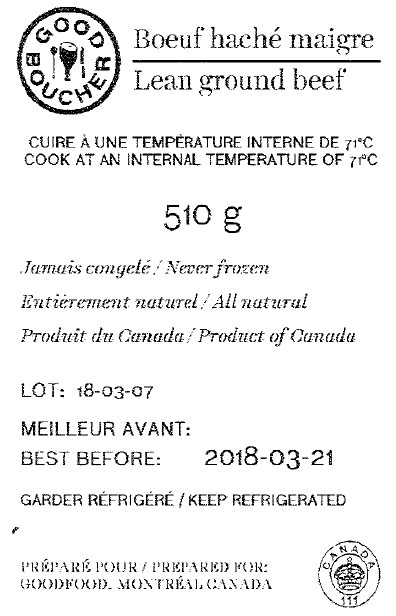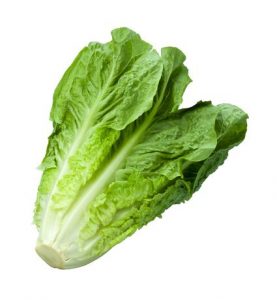Over the past seven weeks, 58 people in the U.S. and Canada have become ill and two have died from E. coli O157H7, linked by Canadians to romaine lettuce, probably grown in California, given the timing of illnesses.
 On Dec. 11, 2017, the Public Health Agency of Canada did its public duty and notified Canadians that at least 21 people were sick with E. coli O157:H7 and the probable source was romaine lettuce.
On Dec. 11, 2017, the Public Health Agency of Canada did its public duty and notified Canadians that at least 21 people were sick with E. coli O157:H7 and the probable source was romaine lettuce.
A couple of retailers in Canada pulled all romaine lettuce from the shelves, but the others shrugged and said, not enough is known.
By Dec. 28, 2017, the Canadian numbers had jumped to 41 sick and one dead, and the U.S. Centers for Disease Control chimed in to say there were 17 sick in the U.S. with a similar strain but they wouldn’t say it was linked to romaine lettuce, with the Trumpesque language of “CDC is unable to recommend whether U.S. residents should avoid a particular food.”
Outbreaks are hard, but where’s the tipping point between protecting public health and protecting a commodity and all the growers, retailers, involved?
Everyone went off and enjoyed New Year’s, and then people woke up again on Jan. 2, 2018 (happy new year), to be told by the Toronto Star (that’s in Canada) that of the 17 U.S. cases, five people have been hospitalized, one of whom has died. Two have developed hemolytic uremic syndrome.
 That’s 58 sick and two dead.
That’s 58 sick and two dead.
On Jan. 3, 2018, Trisha Calvo of Consumer Reports wrote the group’s food safety types advise “consumers stop eating romaine lettuce until the cause of the outbreak is identified and the offending product is removed from store shelves.”
“Even though we can’t say with 100 percent certainty that romaine lettuce is the cause of the E. coli outbreak in the U.S., a greater degree of caution is appropriate given that lettuce is almost always consumed raw,” says James Rogers, Ph.D., director of food safety and research at Consumer Reports.
“There is not enough epidemiologic evidence at this time to indicate a specific source of the illnesses in the United States,” says Brittany Behm, MPH, a CDC spokesperson. “Although some sick people reported eating romaine lettuce, preliminary data available at this time shows they were not more likely than healthy people to have eaten romaine, based on a CDC food consumption survey.” Health officials, Behm says, take action when there is clear and convincing information linking illness to a contaminated food.
“The FDA should follow the lead of the Canadian government and immediately warn the public about this risk,“ said Jean Halloran, Director of Food Policy Initiatives at Consumers Union, the policy and mobilization division of Consumer Reports.
“The available data strongly suggest that romaine lettuce is the source of the U.S. outbreak,” she says. “If so, and people aren’t warned, more may get sick.”
That got attention, and many media outlets chimed in.
barfblog.com’s Ben Chapman told Rachael Rettner of Live Science that, “[To] say ‘avoid romaine for now,’ I don’t know if I have enough information to agree with that statement,” Benjamin Chapman, an associate professor and food safety specialist at North Carolina State University.
“Avoiding just romaine may or may not be enough,” because other lettuces or foods could also be affected, Chapman told Live Science. “It could be that there’s a different [food] source of this exact same pathogen,” he said.
Another possibility is that the E. coli strain causing illness in the United States is actually slightly different from the strain in Canada. “We could be looking at two different outbreaks at the same time,” Chapman said.
About four times a day I’ll get a tweet from the Leafy Green Marketing Agreement – the folks who set themselves up after the spinach outbreak of E. coli O157:H7 in 2006 that killed four and sickened 200 – blowing themselves about how great they are, and how their products are so safe.
 If you want that kind of PR, then you have to take the hits as well.
If you want that kind of PR, then you have to take the hits as well.
LGMA never talks about an outbreak linked to leafy greens (publicly).
To me, they’ve succeeded best at lowering the leafy greens cone of silence and intimidating public health types into delaying reports of outbreaks.
But late on Jan. 4, 2018, LGMA finally made a public statement, below, with my comments.
A group of produce industry associations today issued the following statement to update consumers on a recent e.coli outbreak being investigated in Canada in the U.S.:
It’s E coli. You folks should be well-versed in that.
The U.S. Centers for Disease Control and Prevention has not identified what food likely caused this foodborne illness. No public agency has contacted any Romaine lettuce grower, shipper or processor and requested that they either stop shipping or recall product already in the marketplace.
Defensive.
Even if this outbreak is actually confirmed to be caused by Romaine lettuce, it’s important to recognize this is a highly perishable product with a limited usable shelf life and it’s highly unlikely a specific affected lot would still be available for sale or in a home refrigerator with the last U.S. illness being reported on December 8th.
Carry on, it’s all gone.
Food safety remains a top priority of leafy greens farmers, shippers and processors and the industry has robust food safety programs in place that incorporate stringent government regulatory oversight.
The Pinto defense. Audits and inspections are never enough, and saying we have government oversight does nothing to build trust with the consuming public, as research shows.
Our leading produce industry associations have and will continue to cooperate fully with public health officials investigating this foodborne illness outbreak.
 Play nice in the sandbox.
Play nice in the sandbox.
Anytime we see an outbreak of any foodborne illness, our hearts go out to the victims.
This is what you should have led with. Now it reads like a tack-on.
If the leafy green marketing folks want to be truly transparent, they will make actual inspection data public for mere mortals to review, they will market microbial food safety at retail, and stop stonewalling every time there is an outbreak linked to leafy greens.
I have lots of respect for individual farmers who make a go of it and produce the bounty of produce we enjoy.
I have no respect for self-serving associations with bad soundbites.
A table of leafy green related outbreaks is available at https://www.barfblog.com/wp-content/uploads/2018/01/lettuce-leafy-greens-outbreaks-table-_1-5-18.xlsx
 You may also not understand the phrase, double-double (Chapman’s favorite).
You may also not understand the phrase, double-double (Chapman’s favorite).













